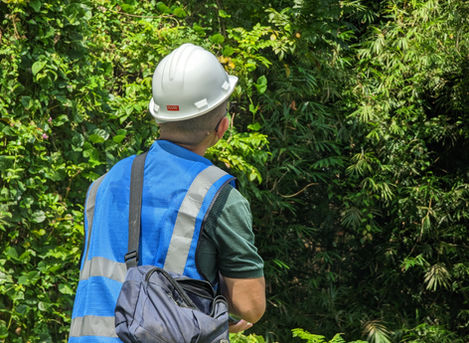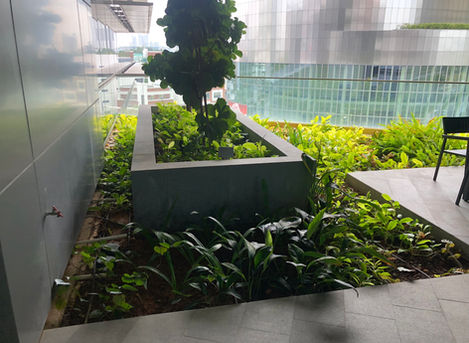Environmental & Ecology
Our planet is facing increasingly complex environmental and ecological issues today. As we empower organizations to understand the challenges encountered by the world today, we allow them to make environmentally responsible decisions.
We assist clients to practice environmental stewardship to minimize the impacts of their developments and operations on the natural environment. We help clients to identify environmental risk and opportunities arising from their developmental activities and help them monitor and verify the environmental performance affecting natural capital.

Environmental Impact Assessment (EIA)
According to the Convention on Biological Diversity, an Environmental Impact Assessment (EIA) is a process of evaluating the likely environmental impacts of a proposed project or development, taking into account inter-related socio-economic, cultural and human-health impacts, both beneficial and adverse.
At TAC, our team of multidisciplinary experts are well equipped to deliver comprehensive EIA services, including initial consultation with government agencies, scoping, baseline data collection, as well as impact identification, assessment, and mitigation. Our team is also experienced in stakeholder engagement consultations, which are often done as part of the EIA process.
The EIA process also takes into account analysis of physical parameters such as airborne noise, ambient air quality, and ground vibration levels in order to assess the environmental impacts.
By having an in-depth understanding of the proposed project and working closely with both the client and technical agencies, we aim to assist our clients in achieving sustainable development.
Biodiversity Impact Assessment
Through our team of in-house and partner specialists, we conduct biodiversity surveys, often as part of larger projects, including Biodiversity Impact Assessments (BIA), which may form part of an Environmental Impact Assessment.

Wildlife & Ecological Services

Fauna Surveys
Fauna surveys are conducted to identify and record species from various taxonomic groups. We use a range of different standard methods and technology, including visual transect surveys, camera trapping, bat acoustic surveys, and hand netting and trapping of invertebrates, depending on the needs of the project. The results of these surveys may be utilized for analysis in biodiversity screening assessments, biodiversity impact assessments, and other relevant studies.
Wildlife Management Plans
Wildlife Management Plans are devised for upcoming developments to minimise the risk of wildlife mortality and injury, while also reducing the risk of human-wildlife conflict incidents.
Through an understanding of a project site’s baseline conditions, and the identification of target species found within and around the site, our team will develop wildlife management plans. Such plans are often included as part of the client’s Environmental Management and Monitoring Plan (EMMP) and may include aspects such as plans for directional clearance of trees, pre-felling fauna inspections, and wildlife response and rescue protocols.


Habitat Restoration Advisory
Habitat restoration involves rehabilitating or enhancing degraded habitats to increase the biodiversity or ecological function of a site. Our team’s practical experience and ecological knowledge allow us to help our clients devise a habitat restoration strategy, including setting objectives and goals, recommending planting palettes, and devising monitoring parameters for a proposed habitat restoration project.
Environmental Management and Monitoring Plan (EMMP)
TAC works closely with clients and contractors through their pre-construction, construction, and operation phase, to ensure that their activities comply with existing legislation and environmental protection guidelines.
An EMMP is a systematic approach to mitigate negative environmental impacts and monitor the implementation of these mitigation measures. It is a useful tool to assess whether the mitigation measures taken are effective to reduce or mitigate potential impacts caused by this project to minimal and acceptable levels during the construction phase.
With the rate of development, both in Singapore and the region, it is crucial to ensure that the impacts of development on the natural environment are reduced. Our EMMPs include relevant aspects of environmental protection such as Wildlife Management Plans, Flora Management Plans, Lighting Management Plans, and other related plans. This will help our clients develop in an environmentally-sensitive manner.

Arboriculture and Habitat Enhancement Services
Trees, which are often integral in biophilic design, provide a range of amenities including shade, air purification, temperature regulation, and habitats for biodiversity. Trees are also sometimes retained due to their conservation or cultural significance. However, it is vital to ensure that the safety and integrity of trees in development sites are not compromised. Should structural instabilities go undetected, these trees may pose hazards in the future.
Our team of certified arboriculture consultants are trained in tree health inspection, assessing construction impacts on trees, tree risk assessment and mitigation, and soil inspection. Our team is also well–versed in the aspects of landscaping consultancy such as designing planting palettes customised for different habitats or purposes. We can thus provide strong support for clients in creating functional, aesthetic, and sustainable green areas.












